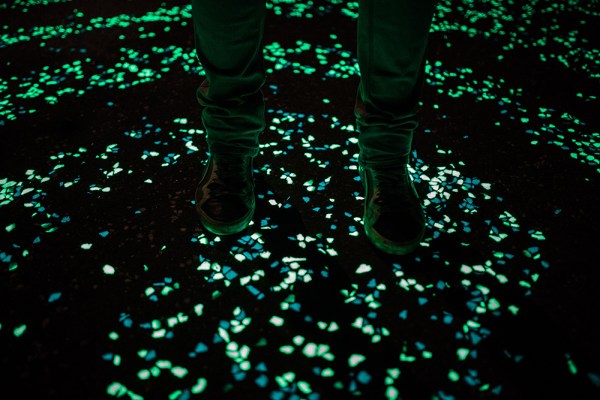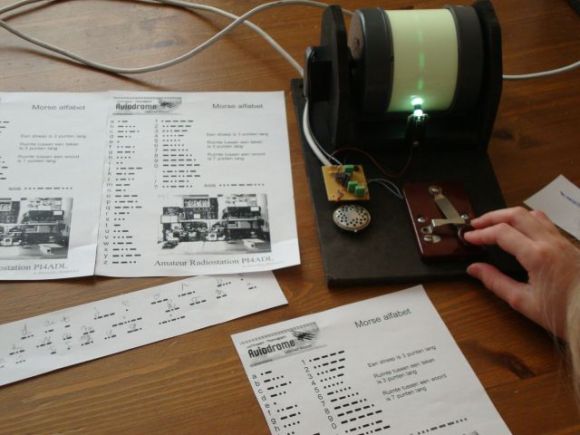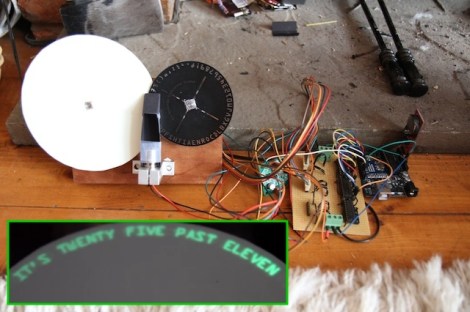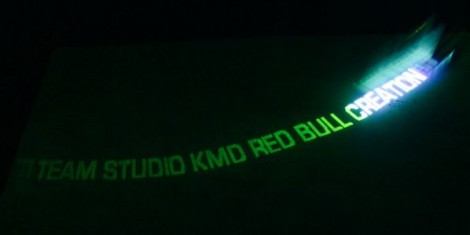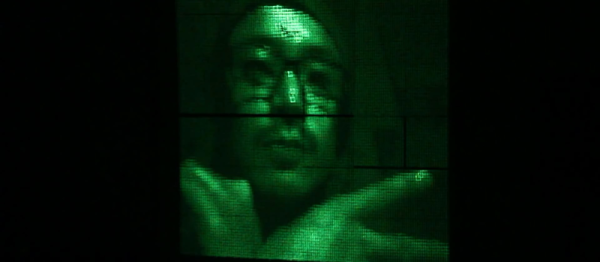When functional engineering blends itself with design and aesthetics, the things we encounter in daily life make the world a more exciting place to be. Artist, [Daan Roosegaarde’s] solar-powered walkway was unveiled last night in Nuenen, Netherlands, illuminating a kilometer long pathway with swirling light, transforming the space visually with functionality.
If the blue and green flowing spirals look familiar, that’s because they were inspired by the painting, Starry Night by Vincent Van Gogh, who was a resident of Nuenen for part of his life. The mosaic-like shapes arranged throughout the path are coated in a special paint containing a chemical that absorbs sun light in order to glow effectively for up to ten hours over night.
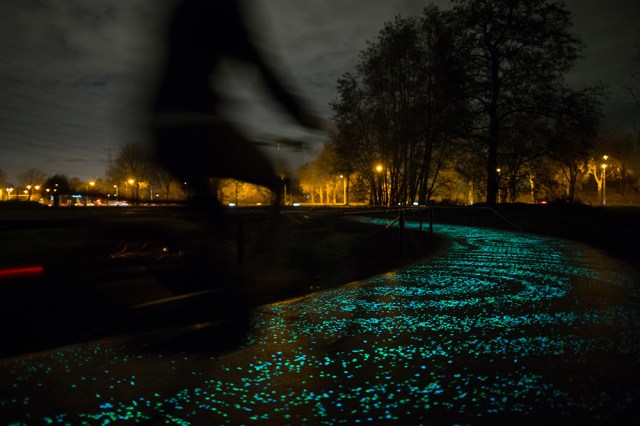 This project is the second installment of [Studio Roosegaarde’s] Smart Highways Research; the larger goal of which is to integrate new technology with roads in an artistically inspired approach to make commuting safer and more energy-efficient. In a few other similar incentives, [Roosegaarde] envisions using this same glowing paint for road markings as a means to help replace the need for street lights. The paint coating he proposes would also be temperature sensitive and capable of creating images to indicate to drivers when there may be ice present due to freezing. His ideas for upgraded roads include a priority lane that could recharge electric cars by means of induction coils built-in underneath them. Even cooler yet, [Roosegaarde] has also proposed the possibility of engineering trees to contain the bioluminescent qualities of some jellyfish and mushrooms so that they too can help replace costly artificial light outdoors. Since some of these technologies are set to be implemented in parts of the Netherlands in the coming years, the re-envisioned environmentally aware future could very well look like a fantasy scene from a painting.
This project is the second installment of [Studio Roosegaarde’s] Smart Highways Research; the larger goal of which is to integrate new technology with roads in an artistically inspired approach to make commuting safer and more energy-efficient. In a few other similar incentives, [Roosegaarde] envisions using this same glowing paint for road markings as a means to help replace the need for street lights. The paint coating he proposes would also be temperature sensitive and capable of creating images to indicate to drivers when there may be ice present due to freezing. His ideas for upgraded roads include a priority lane that could recharge electric cars by means of induction coils built-in underneath them. Even cooler yet, [Roosegaarde] has also proposed the possibility of engineering trees to contain the bioluminescent qualities of some jellyfish and mushrooms so that they too can help replace costly artificial light outdoors. Since some of these technologies are set to be implemented in parts of the Netherlands in the coming years, the re-envisioned environmentally aware future could very well look like a fantasy scene from a painting.
Continue reading “Starry Walkway In The Netherlands Lights Up The Night”

